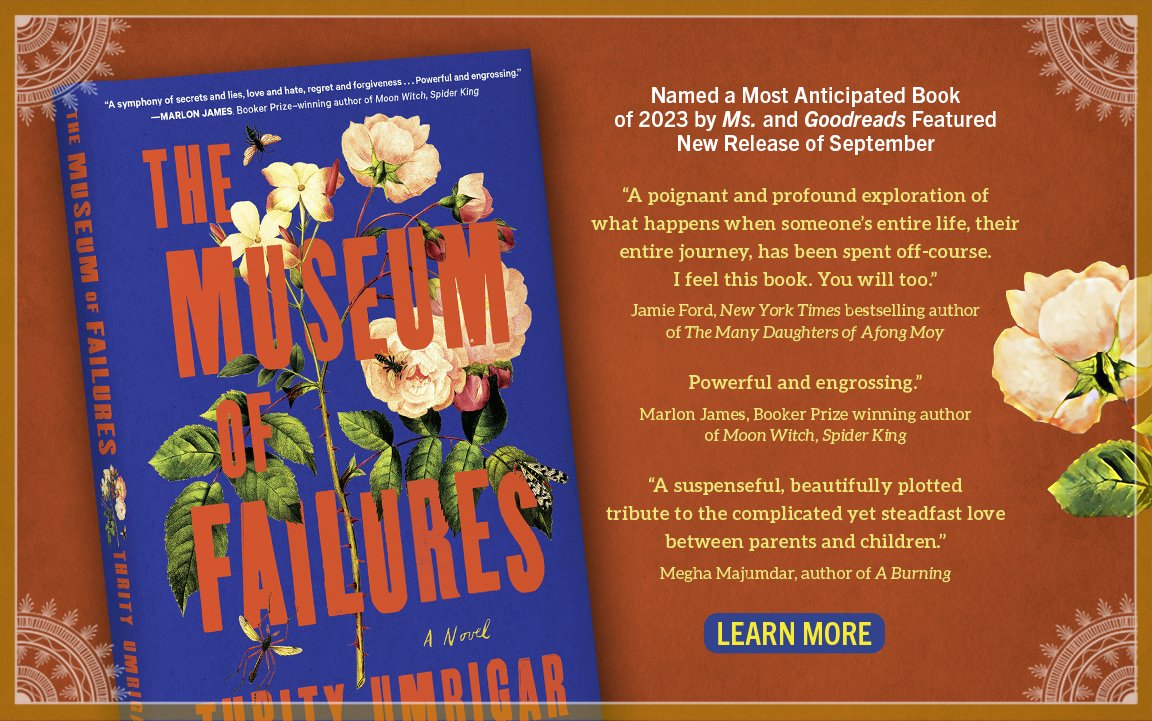Why I wrote The Museum of Failures
The idea for creating a protagonist like Remy Wadia, a successful Indian-American immigrant who is haunted by his past, came to me while watching the 2019 movie, The Farewell. After a teary parting from her beloved grandmother Nai Nai in China, the main character, Billi, leaves with her parents for the airport, to make their way back to New York. They watch as Nai Nai stands outside her home waving them goodbye. Leonard Cohen’s great hymn of solace, Come Healing, plays in the background as Billi sobs her way to the airport.
The splinters that you carried
The cross you left behind
Come healing of the body
Come healing of the mind
Has there ever been a more poetic description of immigration, its pull and push, its promise and its punishment? And does one ever stop carrying those splinters in one’s soul? Can the body and mind ever truly heal from what, in some ways, is the most counterintuitive thing of all—leaving behind those you love?
I felt that scene in my bones, on my skin, my tears merging with those shed by the characters on the screen. I remembered anew that searing pain of leaving behind family and friends, that heaviness with which one departs for the airport, a rending that never gets easier, that hollow feeling of the divided self, transplanted in new soil, yes, but also rooted in another.
I didn’t know the plot to The Museum of Failures at that moment. But I carried that feeling with me out of the movie theater and thought that I would perhaps try and capture it in a book someday.
Years earlier, I’d come across an article about the original Museum of Failure, an exhibit of failed inventions and products based in Sweden. The museum itself had eventually closed, a delicious irony that I cherished. I squirrelled away the name as a possible title for a future book. Once l conceived of the character of Remy, a man with many unresolved issues with his mother and his Indian past, I knew that he would see Bombay as a museum of failures. The book came together quickly after that.
Like me, Remy is a Parsi, a member of a tiny ethnic and religious minority in India, practitioners of the ancient faith of Zoroastrianism. Like me, he is not particularly religious. But when events conspire to keep Remy in Bombay, he feels a renewed appreciation for this small, tolerant, fun-loving and warm-hearted community in which he was raised. Hovering over that appreciation is the existential dread of knowing that the Parsis of India are on the verge of extinction and may disappear within a generation or two.
The older I get, the more I feel the need to commemorate this quirky, eccentric, cultured, philanthropic community, which, for the most part, seems to have avoided the fanaticism and bigotries that bedevil so many other faiths. This is a culture that celebrates modernity and prosperity and good food, that educates its girls and has a cosmopolitan outlook.
This is a community that has lived up to its ancient promise, made to the Hindu ruler who allowed these Persian refugees into India, to make life better for the people around them.
The novel is, to some extent, a paean to this fading culture, so intrinsically woven into the fabric of Bombay—its architecture and its theaters, its art galleries and its science centers.
Lastly, this book is also about the dangers of corrosive family secrets. By shedding light on long held secrets, Remy hopes to let forgiveness and reconciliation take their place, thereby crumbling the walls of the museum of failures. As Leonard Cohen said in another song:
There is a crack, a crack in everything
That’s how the light gets in







